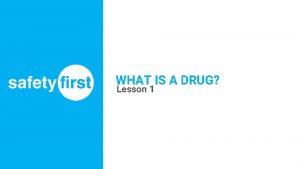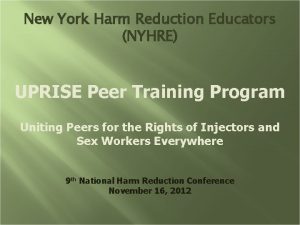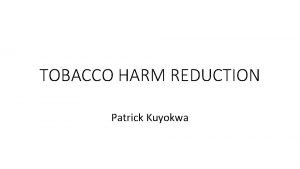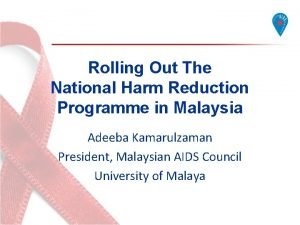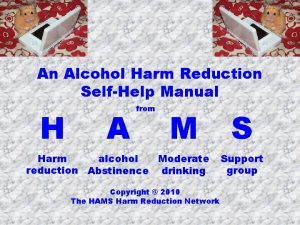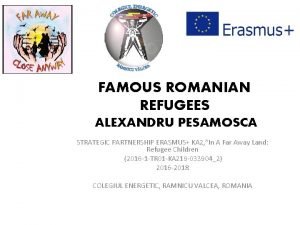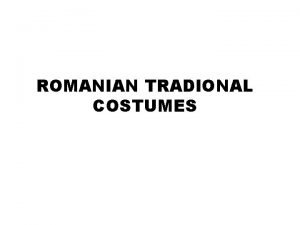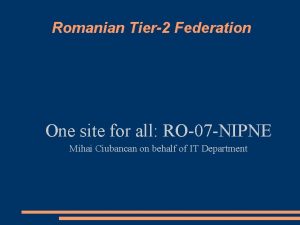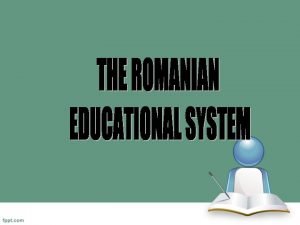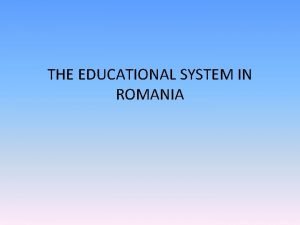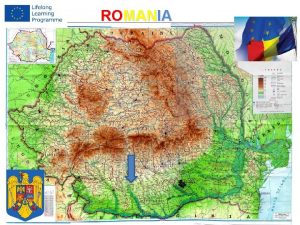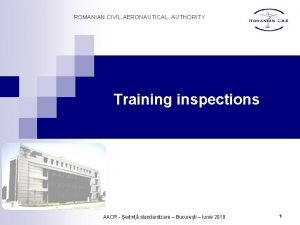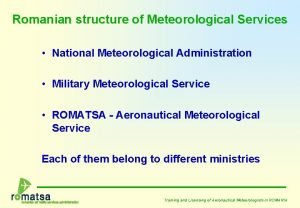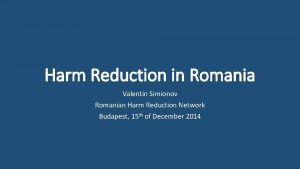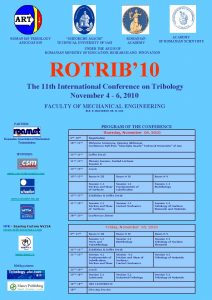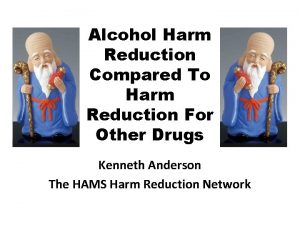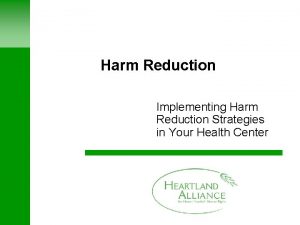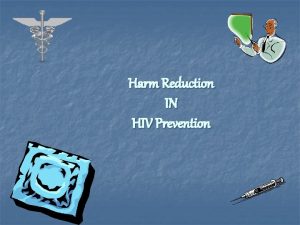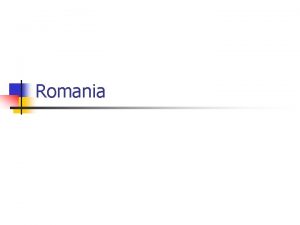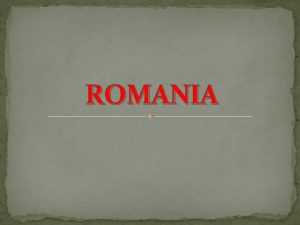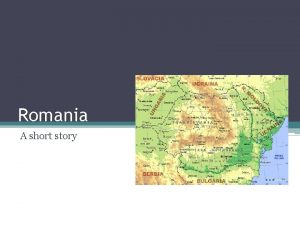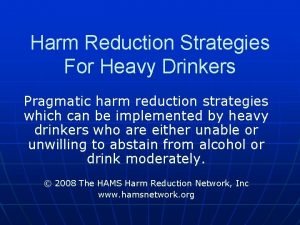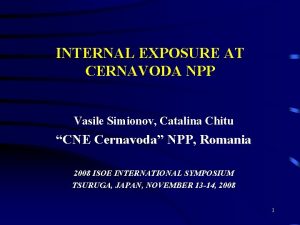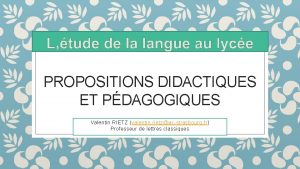Harm Reduction in Romania Valentin Simionov Romanian Harm























- Slides: 23

Harm Reduction in Romania Valentin Simionov Romanian Harm Reduction Network Budapest, 15 th of December 2014

Who we are? • Umbrella organization representing professionals, service providers and drug users promoting harm reduction • Initiated in 2002, as a networking project with ARAS • Officially registered in 2006 • Constituency: 12 organizations + 12 individual members

What do we stand for? • RHRN mission is to promote harm reduction services and to facilitate the implementation of effective policies and programs targeting people who use drugs and other vulnerable groups by: • rising stakeholders awareness with regards to human rights in relation to drug-related issues; • promoting effective drug policies based on human rights and public health principles; • organizing public campaigns to fight discrimination and stigma associated with people who use drugs and related groups; • advocating for innovative harm reduction services.



Harm reduction principles Needle exchange service management Drugs and related harms Overdose prevention PUD and human rights Brochures on needle exchange and treatment

2013: campaign to STOP HIV among PWID

Advocacy • Amending the current law on drugs • Decriminalization of possession for personal use • Reduced sentences for petty sellers • Alternatives to incarceration • Harm reduction services • Access to public funding for NGOs • Quality standards for drug services • Access to services – underage drug users • Elimination of parental consent for emergency situation (life or health threats) • Coordination between child care and drug services

2000: the beginning of harm reduction in Romania

Overview: 2000 -2003 • Outreach services for SWs – first contact with PWID • the first needle exchange centre in Romania • Introduction of anonymous code: OLI 78 VAL 09 M • HIV prevention: sex education / drug information and education / syringe distribution and exchange • Police harassment • Clients reluctance in their first contact with the service • Needle exchange programs available in three cities

Overview: 2004 -2006 • Cooperation protocols – Police acknowledges the role of harm reduction • Increased reach – 5000 clients (all areas in Bucharest) • Focus on service quality: harm reduction kit, distilled water distributed, rapid testing • 2007: funding crisis

Overview: 2007 -2010 • 2007: OST scale-up – 8 centres are opened • Needle exchange – 9, 000 clients reached (2009) • Beginning of legal highs craze (2008) • Regional Conference on OST – 2008 (SEE) • Decreasing of funding (2010) • 6 NGOs provide harm reduction services in Bucharest

Overview: 2010 -2013 • Harm reduction scale-down • Structural funds (reporting with personal ID) • 2011: 62 HIC cases among PWID are reported by Mo. H • Cooperation with local authorities – reporting with ID info – cofinancing • Users mobilizing • SEP in prisons stop functioning (due to ”lack of demand”) • Needle exchange available in three cities



Formula of the epidemic (Novel psychoactive substances + increased injection rates) – decreased availability of syringes = HIV among PWID

2013: PWID and harm reduction professionals protest to draw public attention over harm reduction scale-back

HIV cases in People Who Inject Drugs: 2008 -2014 800 716 700 640 600 500 407 400 300 155 200 100 3 10 24 2008 2009 2010 0 2011 Series 1 2012 2013 2014



Challenges in controlling the epidemic • The public procurement system determines the procurement of poor quality injection equipment, undermining the harm reduction objective • Overall harm reduction scale-back following the closure of international projects or administrative changes / procedures • Decreased access to HIV testing and treatment for PWID

HIV can be stopped if: • 6000 PWID are reached with clean syringes • 3000 PWID enter opiate substitution treatment • 1000 PWID enter social integration programs • Needle exchange is re-opened in prisons • HIV/ hepatitis/TB testing is made available for PWID and other vulnerable groups

Köszönjük a figyelmet!
 Alcohol harm reduction worksheets
Alcohol harm reduction worksheets Harm reduction strategies
Harm reduction strategies New york harm reduction educators
New york harm reduction educators Harm reduction
Harm reduction Harm reduction programme
Harm reduction programme Harm reduction worksheets
Harm reduction worksheets Alexandru pesamosca
Alexandru pesamosca Romanian sas
Romanian sas Romania traditional clothing
Romania traditional clothing Romanian wolf dog
Romanian wolf dog Romanian christmas foods
Romanian christmas foods Romanian scouts
Romanian scouts Christmas in romanian
Christmas in romanian Romania christmas traditions
Romania christmas traditions Romanian dpm
Romanian dpm Romanian amateurs
Romanian amateurs Grading system in romania
Grading system in romania Romanian education system
Romanian education system Where is romania located
Where is romania located Romanian music
Romanian music Romanian civil aeronautical authority
Romanian civil aeronautical authority Sarmalen
Sarmalen Romanian air traffic services administration
Romanian air traffic services administration Romanian language tree
Romanian language tree

